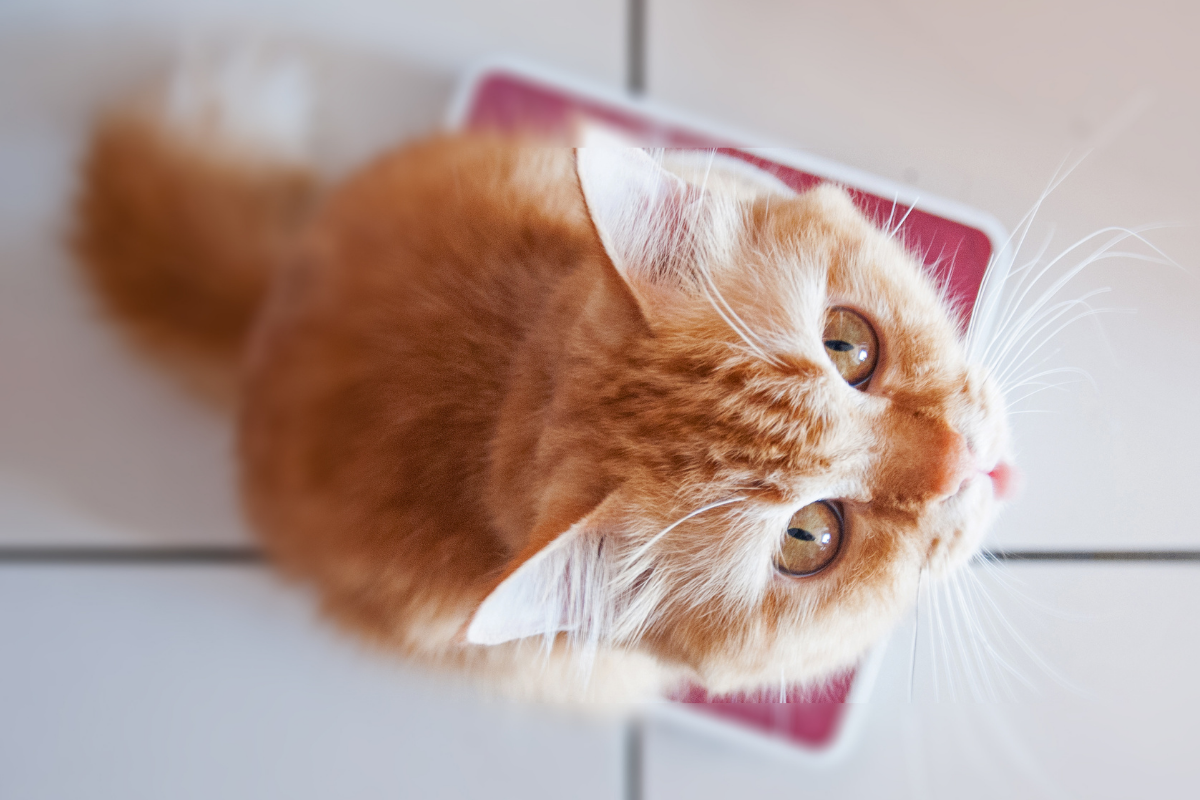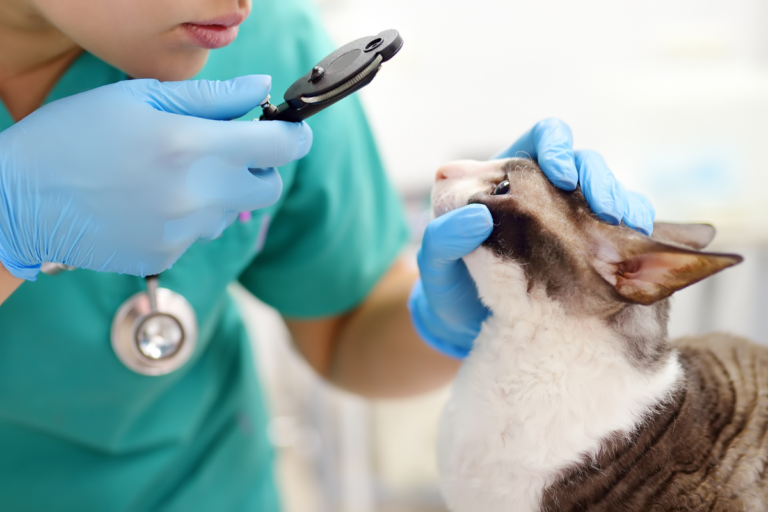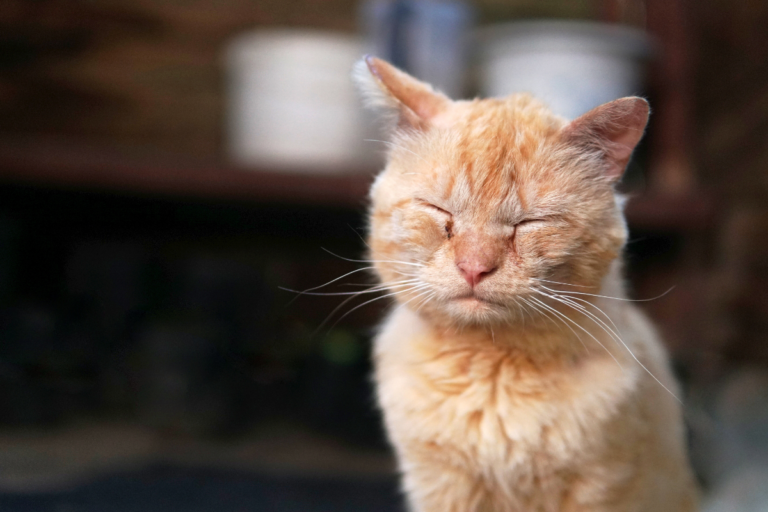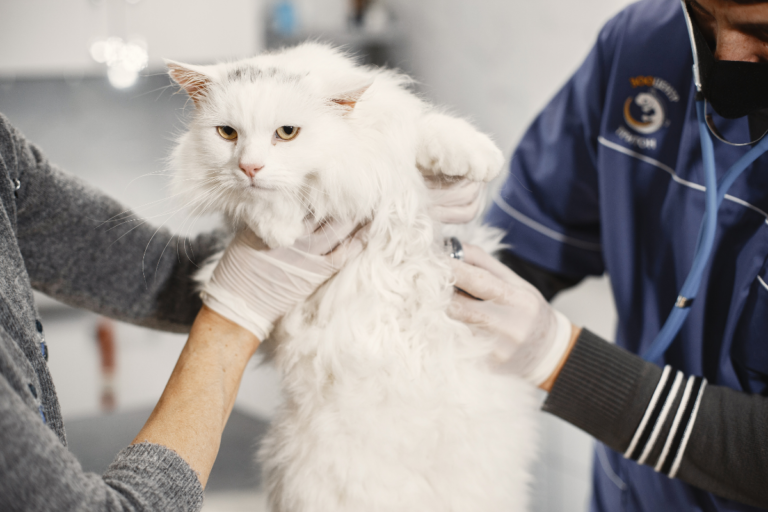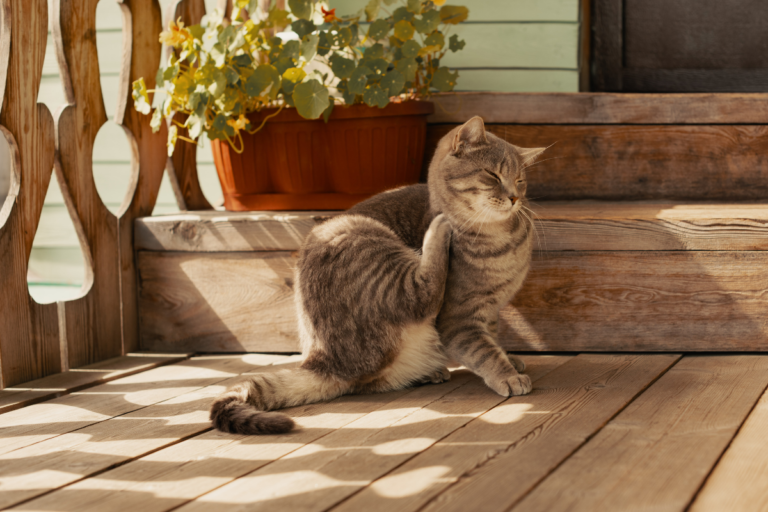Measuring Kittys Wellness: The Importance of Healthy Cat Weight
Understanding Cat Weight
Keeping our feline buddies in tip-top shape isn’t just about keeping them looking trim; it’s a big chunk of the whole “living a long, awesome life” thing. Let’s check out how you can figure out if your kitty’s at a healthy weight and pick up some handy tips for when they need to drop a few ounces.
Determining Healthy Cat Weight
First things, first – getting a handle on a healthy cat weight starts with getting to know your cat’s basic body build. We use something called the body condition score (BCS)—think of it as a report card for your kitty’s body. It’s like checking out how the ribs look, whether there’s a waist, and if you can feel their spine without having to dig through chub.
| BCS Score | Description | Appearance |
|---|---|---|
| 1-2 | Underweight | You can count ribs and see the spine—like, no fat at all |
| 3 | Ideal | Ribs are like a whisper, and a waist is present |
| 4-5 | Overweight | Ribs aren’t easy to find, and there’s no waist in sight, hello fat spots! |
| 6-9 | Obese | Ribs? What ribs? Just a bunch of fat with no waistline |
And then there’s the resting energy requirement (RER) equation to keep an eye on things. This math geekery helps you manage the weight of your chonky or not-so-chonky cat: 70 x (body weight in kg)^0.75 = RER (PetMD).
Weight Loss Guidelines
If your cat’s carrying a few extra pounds, it’s key to help them shed the fluff safely. Aim to slow their weight down to no more than 1-2% of their total body weight each week. Cutting their munchies down to 80% of their RER usually does the trick.
Keeping a close eye with weekly weigh-ins helps you track any progress (or lack thereof). Here’s a little cheat sheet:
| Cat Weight (kg) | Weekly Weight Loss (kg) |
|---|---|
| 4 | 0.04 – 0.08 |
| 5 | 0.05 – 0.1 |
| 6 | 0.06 – 0.12 |
Remember, if your furball tips the scales 10-20% over what’s ideal, it’s getting into chubby territory, and more than 20% gets into obese land. We’re talking about a long-term impact here; some hefty kitty fat can shave off five to 10 years of their nine lives (Pawlicy).
Watching what your cat eats and bouncing around with them to get some exercise is important. Check out more precise plans on how to deal with senior cat weight loss and overweight cats. Getting the weight right isn’t just good for their health, it keeps them purring with happiness and full of life!
Factors Affecting Cat Weight
Let’s get the facts straight: your cat’s weight isn’t just about how much kibble it munches. Plenty of things play a role, and knowing them can keep our little furballs healthy and leaping like they were born to be on a trampoline.
Breed and Gender Variances
Cats, much like donuts, come in different shapes and sizes. What’s brilliant for one breed could be too much for another.
Peek at breed differences:
- Siamese cats, the feline aristocrats, float around 8-12 pounds for the ladies and 11-15 for the gents. Yeah, they’re keeping it slender.
- Maine Coons, on the other hand, are the giants, tipping the scales from 10 to 25 pounds. Think of them as the kindhearted giants with fur.
- Our everyday Domestic Shorthairs hang out between 6-16 pounds, with males often edging out the females (Pawlicy).
Boy vs. girl differences:
Mostly, the guys weigh more. A male Siamese, for instance, has a little more heft than a female.
| Breed | Female Weight (kg) | Male Weight (kg) |
|---|---|---|
| Siamese | 3.6 – 5.4 | 5 – 6.8 |
| Maine Coon | 4.5 – 8.2 | 5.5 – 11.3 |
| Domestic Shorthair | 2.7 – 6.8 | 3.6 – 7.3 |
Excess pounds aren’t just a cosmetic issue. They can lead to problems like heart troubles, diabetes, and more hospital visits than a hypochondriac (Catster).
Neutering Effects
Snip-snip, and suddenly your cat’s calorie burning isn’t what it used to be. Yep, neutering can influence weight too.
Weight watch alert:
- Fixed cats often gain weight at warp speed.
- Post-surgery, think of being a bit like your mom cutting you off after one too many cookies—cut back their food by about 25%.
Their new life needs fewer calories, so keep those food portions under control to dodge weight-related issues like kidney or gum problems.
Keeping our cats’ weight balanced is all about giving them the right diet, exercise, and maybe the occasional run around your living room. For more tips on this balancing act, sneak a peek at our guide on weight management strategies.
Managing Cat Weight
Keeping our cats at a healthy weight is like a backstage pass to their long, vibrant life. Let’s chat about the not-so-fun risks that tag along with chubby kitties and practical ways to tiptoe around the problem.
Health Risks of Overweight Cats
When our fluffy pals start plumping up, it’s not just their bellies that pay the price—it tickles a lot of serious health nerves. Chubby cats are more than twice the fun of cuddling, but they’re also twice as likely to have health hang-ups.
Those little furballs hit the “overweight” button when they clock in 10-20% over their prime weight and “obese” past the 20% mark (VCA Hospitals). Extra flab isn’t just excess waddle. It spits out nasty hormones and stresses their tissues like a stretch too many (Pawlicy).
Let’s break down the health scares:
- Heart Disease: That extra fluff turns into a heavy burden on your feline’s ticker.
- Diabetes: Chubby cats might just be inviting a sweet yet sour relationship with their blood sugar levels.
- Kidney Disease: Too much weight can make kidney functions wobbly, which is a recipe for bad news.
- Joint Issues: Extra pounds mean those graceful jumps and stretches turn into a painful endeavor.
- Shorter Lifespan: Cat chubbiness could chop off five to ten years from their otherwise delightful nine-lives adventure (Catster).
Weight Management Strategies
Making sure your whiskered buddy is pushing the right scales is kinder than yet another belly rub. Here’s the plan:
- Diet and Nutrition
- Portion Control: Keeping those servings in check can be the golden ticket. Stick to what’s right for your whiskered companion’s weight and antics.
- Quality Food: Go for food that’s all protein goodness and low on carbs, packed with the right nutrients.
- Regular Feeding Schedule: Same chow time every day helps keep their tummy guessing and avoids that “second breakfast” trap.
- Exercise and Activity
- Interactive Play: Let them unleash those hunting chops with some daily play. Feather sticks, anyone?
- Environment Enrichment: Climbing trees, scratchers, and puzzle toys are your best bet for getting them moving more than just to the food bowl.
- Regular Monitoring
- Frequent Weigh-Ins: Keep track of their figures and tweak food and fun as needed.
- Veterinary Consultations: A trip to the vet now and then keeps tabs on progress and sorts any health mysteries.
| Weight Category | Weight Range (kg) | Health Risks |
|---|---|---|
| Ideal Weight | 3.5 – 4.5 | Sitting pretty and healthy |
| Overweight | 4.6 – 5.4 | Flirts with health risks |
| Obese | 5.5 and above | Endangered health zone |
Want more cat wisdom? Peek at our piece on healthy cat weight. Curious about how some sneaky illnesses can toy with your cat’s weight? Hop over to check cat liver problems.
By eyeing their diet, nudging them into play, and giving their health the attention it needs, we can keep our cats looking lean and living large. For more savvy tips on sidestepping weight wobbles and health quirks, dig into our guides on cat disease and cat illness.
Cat Weight Loss Strategies
We’re all about helping our whiskered pals stay trim and fit. A healthy weight means a happier life for our cats, so let’s chat about practical ways to help them lose those pesky pounds. We’ll dig into things like grub, exercise, and keeping them active.
Diet and Nutrition Tips
The path to a slimmer kitty starts with what’s in their bowl. Here are a few food tweaks to help them lighten up:
- High Fiber, Low Fat: Think of this as the cat version of feeling stuffed after a big salad. More fiber equals more satisfaction with fewer calories and it’s easy on the tummy, too.
- High Protein, Low Carb: Keeps muscles strong and tummies content. Kind of like cats’ version of that trendy keto diet.
- Wet Food: It’s like sticking to soup diets for humans. Adds water but not calories. Fill them up without the extra pounds.
For quick reference, check out this handy breakdown:
| Diet Style | Achievements | Points to Ponder |
|---|---|---|
| High Fiber, Low Fat | Fills ‘em up, aids digestion | Watch for fiber overload |
| High Protein, Low Carb | Keeps those muscles, curbs hunger | Balance is key |
| Wet Food | Keeps them full, hydrates | Quality matters |
Before making any big food changes, a vet’s guidance is gold. Slow and steady wins the weight loss race; fast shedding can be risky business. Vets are great for keeping things on track. Need more tips? Head over to our heart issues in cats and cat diabetic pages.
Exercise and Activity Levels
Moving those paws is vital for burning calories. The more active they are, the healthier they’ll be. Here are some playful ideas:
- Interactive Toys: Feather wands, the classic red dot, or tumbling balls – perfect for kitty aerobics.
- Climbing Challenge: Get them scaling cat trees or stretching on scratch posts for a workout and some entertainment.
- Playtime Bookings: Set aside short slots each day for fun. A few daily minutes can do wonders.
- Puzzle Feeders: Gets them thinking and moving to earn treats, exercising mind and body.
Here’s a snapshot of fun-filled calorie burners:
| Fun Stuff | Perks | Pro Tips |
|---|---|---|
| Interactive Toys | Boost heart health, torches calories | Mix up the toys |
| Climbing Rigs | Tones muscles, sparks curiosity | Spread ‘em around |
| Playtime Rituals | Regular exercise boosts | Switch it up for fun |
| Puzzle Feeders | Dinner with a side of activity | Variety keeps it exciting |
Make sure your cat isn’t overdoing it. Consistent activity not only manages weight but also livens up their days, slashing the odds of weight-related health hiccups.
For more feline-focused care tips, have a peek at our sections on cat teeth, cats worms symptoms, and senior cat weight loss.
